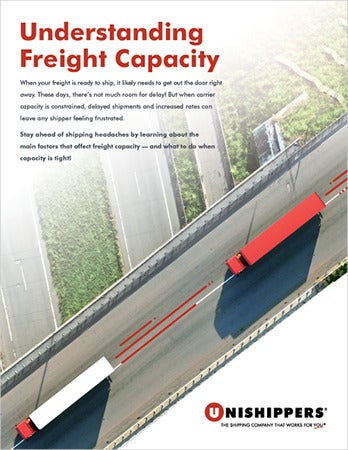Your Guide To Understanding Freight Carrier Capacity
When your freight is ready to ship, it likely needs to get out the door right away. These days, there’s not much room for delay! But when freight carrier capacity is constrained, delayed shipments and increased rates can leave any shipper feeling frustrated. Know the feeling? Then it’s time to freshen up on the ins and outs of freight capacity!
Stay ahead of shipping headaches by learning about the main factors that affect freight carrier capacity – and what to do when capacity is tight. Download Unishippers’ e-guide, Understanding Freight Capacity, to get started!
The factors at play
Unsure why your shipping rates are fluctuating in the current market? In our e-guide, we’ll take a look at the top factors that can impact freight carrier capacity, including:
- Driver availability
- Market conditions
- Number of trucks
- Government regulations
- Seasonality
- Severe weather
Navigating constrained capacity
Once you understand the main factors that can impact freight capacity, it’s time to learn how to manage your shipping rates when capacity does get tight. In our e-guide, you’ll get helpful tips for navigating constrained freight capacity, including tips for:
- Planning ahead
- Working with multiple freight carriers
- Consolidating your freight
- Partnering with a third-party logistics (3PL) provider
You deserve the very best rates for your business shipping, no matter the current state of the freight industry. Download Unishippers’ guide to learn everything you need to know about freight capacity – and how to get your freight on the road without costly delays.
Need help navigating freight capacity concerns?
Carrier capacity may fluctuate, but our dedication to affordable freight shipping solutions never will! Contact Unishippers today to get your freight on the road.



